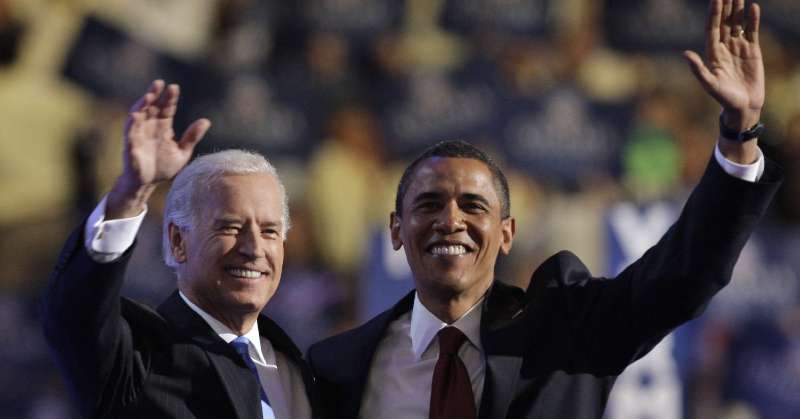
1. Win or Lose?
The left was focused on knocking on doors in rural Wisconsin, while the center of the party turned a lot of districts from red to blue.
—Sean McElwee, 2020
How is it possible that the Democrats find it hard to defeat such a national embarrassment as Donald Trump? The truth is, we should win easily. This contest is ours to lose. So winning is mostly a matter of not shooting ourselves in the foot.
Democrats favor broadly popular issues, are fired up as never before, and the country craves a return to less angry politics. That should do it. So where is the problem coming from?
The problem is not incompetence, we work around that reasonably well. Neither is the problem the proverbial a circular firing squad, it’s quite one-sided. The problem is that there’s a sizable minority shooting at our feet. It’s an inside job.
Of course, I’m talking about the radical attack on the liberal/moderate center of the Democratic Party. Radicals see the Democratic Party as their corrupt enemy. They openly state their goal of taking over the party. The liberal center sees radicals as their confused ally, with counter-productive strategies, but the same broad goals.
One side attacks while the other defends and calls for cooperation. This is a dangerous game when the real enemy is polarizing the country and corrupting the government, especially the Department of Justice.
Looking closely at the 2020 Democratic primary race and the 2018 midterms reveals the basis of the liberal view. We’ll do that in the first two chapters. But let’s take a quick look at 2018 to glimpse one source of our troubles.
We won in 2018 for a very simple reason. The liberals held their ground despite the pressure and naysaying from the radicals. Meanwhile, the radicals stuck to their own plan for an overwhelming Congressional victory. Altogether the blue wave flipped 43 House seats from red to blue. But according to Sean McElwee, the most prominent Berniecrat pollster, here’s what happened.
Sanders … convinced a lot of progressive leaders that his white working-class voters were supporting a progressive agenda. That led to some huge missteps in 2018 when the left was focused on knocking on doors in rural Wisconsin, while the center of the party turned a lot of districts from red to blue.
McElwee knows his data. The three radical PACs made 117 radical endorsements for the House and promised to elect Berniecrats even in deep-red states! So they managed to turn how many districts from red to blue? I’m sure the number sticks in McElwee’s craw or he would’ve said it … zero. As in none.
The blue wave was almost entirely powered by moderates and the New Dem PAC, which endorsed 33 of the candidates who did flip seats from red to blue.
What this means. Radicals have never understood electoral politics. The last time they gained power in the Democratic Party was the late 1960s, and I was cheering them on. LBJ had won a 61% landslide in 1964. After eight years, we took control and ran George McGovern — a wonderful person, by the way — in 1972. He polled 37% and summed that up by saying, “I opened the doors of the Democratic Party, and 20 million people walked out.” This crushed the Democrats and radicalism for decades. Of course, we hadn’t seen any of that coming; we were radicals.
The two sides of radicalism. So what’s wrong with radicalism? The problem is not radicalism in the usual sense of that word — the belief that there should be fundamental social change. When we look at the poverty, violence, educational inequalities and changing climate in America, almost all of us want fundamental social change. By the standard definition, we’re almost all radicals.
If you’ve paid attention, even Bernie Sanders has confirmed this. He has recently adopted FDR, the father of Democratic liberalism, as his hero. To avoid embarrassment and to help his base feel righteously progressive, he has called FDR’s proposals “democratic socialism” (they’re not). But, as you will see, he learned about FDR’s Second Bill of Rights from an Obama liberal, and he has adopted it lock, stock and barrel. That’s very good news for healing the party.
But another side of radical ideology is not shared by liberals, and it causes all the trouble. This is the radical mind-set. First described in 1919 by Max Weber (see Chapter 18), the father of sociology, it rejects compromise, applies purity tests and relies on stunning overconfidence. I’ll call this the dark side of radicalism.
Problems from the dark side. A quarter of those who voted for Sanders in the 2016 primaries did not vote Democratic in November, and half of them voted for Trump. Most radicals are now recognizing that Democratic votes matter. But the Democratic Socialists of America (DSA), with over 50,000 dues-paying members, all of whom are Berniecrats, has already vowed not to endorse Biden. Similarly, whenever Biden is criticized, a host of radicals pile on. Michael Moore told Vanity Fair on May 21 that “Biden does not generate the necessary enthusiasm,” and said he “may not be the nominee.”
Coming from Trump, such criticism would do no harm; we don’t believe a word he says. But millions of Democrats take Moore seriously, and other naysaying Berniecrats are also influential.
A very different problem is radicals taking extreme positions to show they are more righteous than liberals or even other radicals. For example, ending private health insurance in one step and abolishing ICE are two positions that make headlines throughout the right-wing press. Trump tweets them, and they fire up his base. He and the Russians back Sanders and love Rep. Alexandria Ocasio-Cortez — for all the wrong reasons.
All told, three radical dark-side strategies damage the Democrats and will help Trump win.
- Direct attacks on Biden
- Extreme positions that fire up Trump’s base
- Myths that slander Democratic leaders and the party
What is to be done? The most important thing is to help get out the vote. I’m not denying that. But how can you make use of what’s in this book? There are two ways.
- Learn about dark-side myths and avoid spreading them.
- Speak up when dark-side ideas are being expressed.
Few of the most activist radicals can be convinced by logic. But ideology spreads mostly through either social pressure or through persuasion by trusted sources such as friends.
Radicals, who argue aggressively and claim more knowledge than they possess, deliberately make it hard for the center to speak up. However, I have observed that people give voice to their views and feelings more often when they feel confident of their facts and their position. It only makes sense. The purpose of this book is to help instill such confidence in the liberal center.
Why this matters. Of course, protection Joe Biden from radical attacks is the first reason. But consider who made the fundamental progressive changes in the last 160 years: Lincoln, Teddy Roosevelt, FDR, LBJ and Obama. All were liberals in the sense that they compromised, never applied purity tests and did not strive for a revolution. And Sanders’ three favorites — Teddy, FDR and LBJ — were super-rich and at the pinnacle of their party establishments. Honest radicalism would reject all the presidents who gave us our most fundamental progressive changes.
There is a similar line of notables on the radical side, but none have accomplished anything remotely close to the fundamental progressive changes brought about by these liberal politicians.
I’m not saying radical ideas don’t have an important role to play. But the ones that matter, their goals and aspirations, are shared by liberals. (Of course, I am talking about radicals who follow Sanders’ FDR liberalism — not the Marxists.)
The radical wing of the party is strong now. Not as strong as it was in 1972, but it’s within striking distance. After Rep. Ocasio-Cortez won her primary, Sanders was asked about our loss of the presidency in 2016. “In many ways, we won.” That was how he saw November 2016. If radicals poison the waters again in 2020 and Trump wins, those operating on the dark side will see Biden’s loss as their gain. And with the party demoralized, they could gain control.
For this reason and to save the country from four more years of divisive rule by a president bent on dividing our country and degrading our government and our democracy, we need to resist the dark side of radicalism. Luckily, most who call themselves progressives now back FDR’s liberal agenda as Democrats always have. We should reject their erroneous myths but welcome them as allies.

 Ripped Apart
Ripped Apart

